Artcore
byIt happened in 1991 when jungle was not clearly identified as a genre yet and DJs’ experiments made it evolve and develop; when the word jungle itself was not used to refer to a genre but the concept was about to emerge; when Danny Williamson better known as LTJ Bukem played Demon’s theme during his sets which in fact was the first jungle track that had a consistent ambient feel to it—atmospheric sound, in other words. Bukem said in an interview that Demon’s theme was actually written in 1990, a year after the DJs started to mash breakbeat, house, reggae, techno, dub and other genres and subgenres. Soon after he released a vinyl record on the newly created Good Looking Records label which sported a logo of a cartoon-like man. The record featured two tracks that turned out to be a great influence on the
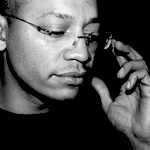
LTJ Bukem
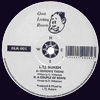
LTJ Bukem — Demon’s theme 1991
From Demon’s theme / A сouple of beats single, Good Looking Records

LTJ Bukem — Music 1993
From Music / Enchanted single, Good Looking Records
Another year later, in 1992, Bukem’s label released more records that featured his own tracks along with the music from other producers. The records were all tending towards the atmospheric ambient sound. Atlantis and Music became the classics of the atmospheric jungle music which was called so due to the absence of any other name. Lead melody infused with various samples, relentless up-tempo rhythm and somewhat eclectic sound are the features that best characterize Bukem’s early work.
In 1992 Clifford Price (aka Goldie) and Rob Playford united as a duo, chose the name Metalheads and released a record which set the tone for the industry if not was actually ahead of its time. Terminator EP hits with its crazy energy and somewhat savage sound, brutal force verging on aestheticism. Heavily syncopated metal drum beats, Diane Charlamagne’s hypnotic vocals in Kemistry—all these factors will make the four-track EP an absolute hit of the Grooverider parties. A year Angel was released where Goldie, still using the name of Metalheads, now single-handedly continued to develop his own vision of music: the melodious opening of the track is enhanced with the sampled seagulls’ cries while Diane Charlamagne’s vocals are so outstanding that the chorus sounds as if her voice was reversed. And there is this rough ragged bassline that does not give the listener a break. Angel made Goldie famous outside the circle of

Metalheads — Angel 1992
Vocal Diane Charlamagne
From Angel single, Synthetic
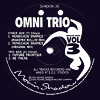
Omni Trio — Renegade snares 1993
From Vol. 3: Renegade snares single, Moving Shadow
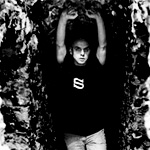
Omni Trio
1994 and the middle of the ‘90s was the time when jungle and the ambient jungle reached their peak popularity. Connoisseurs say that ambient jungle is a simple combination of ambient and jungle music and if we dispense with the drum component of jungle and still get a solid ambient piece without any awkward pauses then this piece can be identified as 100 percent ambient jungle. There is a ring of truth to this statement since we can think of an entire list of tracks that have a long melodious opening and an equally long melodious ending. In 1995 the PFM duo presented their second record on the Good Looking label with its first track quickly becoming a classic of intelligent.
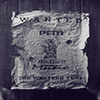
PFM — The western 1995
From The Western / Hypnotizing single, Good Looking Records
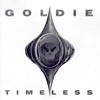
Goldie — Inner city life 1994
Vocal Diane Charlemagne
From Timeless (The full canvas) single, FFRR

Diane Charlemagne
We have introduced the term intelligent for a reason. It was exactly 1994 when Goldie first presented his 21 minute long symphonic
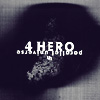
4hero — Universal love 1994
Vocal Carol Crosby
From Parallel universe album, Reinforced Records
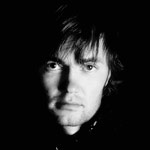
Seba
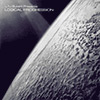
Seba & Lotek — So long 1996
From Logical Progression compilation, Looking Good Records
Doc Scott — Tokyo dawn 1996
From Tokyo dawn single, Looking Good Records
During 1994 and 1995 LTJ Bukem gathered a crew of musicians who made mellow jazzy atmospheric tracks that fit the concept of the Good Looking label. The Looking Good label appeared at the same time and specialized in more experimental
However, the in-crowd of

LTJ Bukem — Horizon 1995
From Horizon / Rainfall single, Good Looking Records

Aquarius
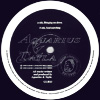
Aquarius & Tayla — Soul searching 1995
From Bringing me down / Soul searching single, Good Looking Records
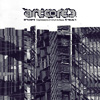
Saint Etienne — The sea (PFM remix) 1996
Vocal Sarah Cracknell
Remixed by Mike Bolton
From Artcore 3: Expressions in Drum & Bass (1997) compilation, React
For a long time Good Looking label with its affiliates was the biggest label among the few ones that released music of such kind. It was a major player in the industry and a true home for the producers whose work was in tune with the label’s philosophy. Yet when the situation started to change and there appeared more intelligent musicians who released their music on other labels, the term of artcore was invented in order to refer to the sophisticated features of the style. In 1995 a British label named React released the first volume of the Artcore compilation. The cover featured detailed characteristics of a newly proclaimed subgenre: “Artcore: jungle with fusions of various styles: from ambient to jazz. Artcore: rhythmic, hypnotic, melodic, deep, spacey. Artcore: breakbeats used more as another sound or instrument, to complement the surrounding sounds. Appreciate artcore on different levels: relax to the spacious, abstract, ambient, surround sounds and allow them to drift through your subconscious at the same time focus on the jungle rhythms in the forefront for direct, immediate, stimulation.”
The second record which was released the following year described the subgenre shortly yet very precisely: “A rich collage of drum and bass masterpieces whole original use of technique and style has given artcore it’s meaning as a modern art form. Constantly redefining itself, the deep and rhythmic drum and bass vibe naturally mutates the traditional genres of dub, jazz, soul, techno and ambient.”
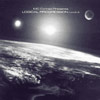
MC Conrad — Nadiresonance (PHD remix) 2001
Remixed by Patrick Henry
From Logical Progression Level 4 compilation, Good Looking Records

Chameleon — Just close your eyes & listen 1995
Vocal Kirsty Hawkshaw
From Links single, Good Looking Records

DJ Crystl — Meditation 1993
From Meditation / Warp drive single, Dee Jay Recordings
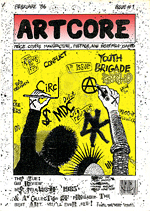
The first issue of Artcore magazine. February 1986
Artcore is not a new word. It was used by hardcore punks in the ‘80s when they referred to their conceptual performances, exhibitions and tricks. 1986 saw the foundation of the Artcore magazine which it still issued annually. It focuses on hardcore bands, labels, freshmen and veterans of the music industry. The magazine puts an emphasis on the graphic design of the punk-rock movement and presents the matter in a way which was relevant during the hardcore’s popularity of the ‘80s. Which is actually very cool.
Artcore as a hardcore subgenre, for example
In 1993 Patick van Kerckhoven, a Dutch man with a shaved head who had been a DJ for about 10 years at the time, founded his own record label named Ruffneck Records where he released his own music as well records made by other musicians. Van Kerckhoven used a musical style that he invented as a basis for his work. He named the style artcore and it was in fact a small subgenre of hardcore characterized by a more melodic sound which was achieved due to extensive use of the Roland Juno synth. It still sounded a lot like hammering, whether you called it artcore or not. In 1997 the hardcore movement declined, Ruffneck Records went bankrupt and artcore went deeply underground.
The terms of darkcore that used to be a subgenre of jungle before transforming into
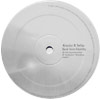
Alaska & Seba — Back from eternity 2006
From Perpetual / Back from eternity single, Artic Music
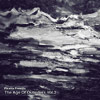
Requiem — Synaesthesis 2009
From The age of outsiders. Volume 3 compilation, Outsider
Bob James
Westchester lady
1976
Back to the topic, I would like to show an excellent example of artcore which is a fusion of different styles that back in the day gave birth to jungle. In 1995 Adam F whose records had been released in a rather limited amount released a demo of Circles on an acetate disk that did not really impress the DJs since it lacked the key element that later made it famous—the main sample taken from a Bob James’s funk track. “The Bob James sample was probably the last thing to be added to this, actually. When I was making this I was driving around in my car and playing it back. Then I randomly switched the music to a Bob James CD and that sample came on. I was like, ‘My God! This is so going to work.’ So I rushed back upstairs and then re-worked the whole track.” Circles became the most popular
The next single Aromatherapy sounded like a breath of fresh air taken in the misty alleys of a china-town full of dangling paper lanterns. When Bukem heard the track, he offered a record deal to Adam who was already signed to another label. Adam’s multi-style singles were a highlight of Metalheadz Nights that were held on Sundays in a small club called Blue Note. “This was the kind of sound you'd get at Fabio and Bukem’s night [Speed]. I was going to them a lot. It was the flipside of the Blue Note. It was all about those long intros and tracks—this is over seven minutes. Some went for nine! Now you might play 40 tracks in a set. Back then you’d play 12. They were strong enough to take you through a journey. That’s what Aromatherapy was about. It also has a traditional ‘thin’ drumbreak over the top. Back then, in that Good Looking world, it was all about that and the heavy 808, rolling with the bass.” His next single was called
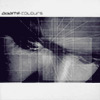
Adam F — Circles 1995
From Colours album, Positiva
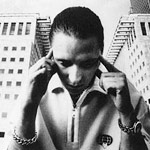
Adam F

Adam F — Aromatherapy 1996
From Colours album, Positiva
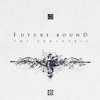
Future Bound — The ephemeris 1997
From The ephemeris single, Timeless Recordings
The expression intelligent
Intelligent is more of a general name for anything that represents the melodic or, as they say, lighter side of
Music & stories
12″ pages on social networks and weekly materials that you can’t find on the website. Cool electronic music videos, tune of the week, histories behind albums and FridayFive tracks. Join!